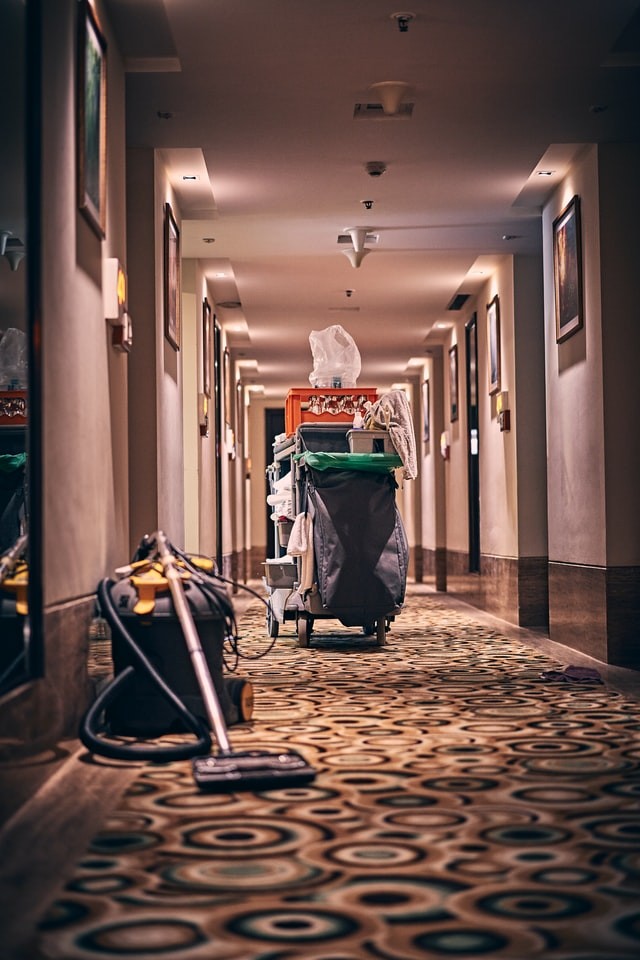How People, Data & Devices Will Impact The Future of Cleaning
The cleaning industry has performed beyond expectations in the past two years and further growth of up to 6.5% is expected by 2022.
With people more aware than ever before of the importance of hygiene, sanitation and maintaining high cleaning standards, commercial janitorial services are increasingly in demand. So, what does the future hold, and how will people, data, and devices impact the future of commercial cleaning in 2022 and beyond?
The challenges facing commercial cleaning
When we think about cleaning an office, storefront, or restaurant, we imagine people using vacuums, mops, and other gadgets, but with the rising cost of labor, deep cleaning will become increasingly more expensive.
In addition, a career in the cleaning industry may not seem particularly glamorous to new generations of recruits who are preferring to work in the tech or digital sectors. This could lead to a severe shortage of cleaners in future even though a recent Forbes article reports that janitorial and cleaning workers are already in high demand.
Another challenge facing the industry is an increasing number of organizations that are asking for deep cleaning more often, while hoping to pay the same rates they've paid in the past.
In order to face these challenges head on, and find solutions that are fit for the future, the industry is changing in significant ways.
 (Photo : Photo by Ashwini Chaudhary on Unsplash)
(Photo : Photo by Ashwini Chaudhary on Unsplash)

A clean image for business
Office worker surveys often show that janitorial issues are right at the top of many employees' complaints about their workplace. Personnel across the United States are not always happy with the state of hygiene in their offices, stores, restaurants, bars, and other work spaces.
With many managers concerned about the safety of their staff and customers, organizations are either hiring more cleaners or asking their janitorial staff to work longer shifts. Often having to adjust their budgets to deal with the "new normal". Since these organizations are not in the business of commercial cleaning, it can be difficult to navigate the ins and outs of maintaining healthy operations along with the various cost implications. Is there a better way? The commercial cleaning industry certainly thinks so as they adjust in certain areas to ready themselves for the future.

How technology is disrupting the industry
The cleaning industry knows it must undergo significant change if it is to survive in the long-term. Automation will play a key role in any shifts that do occur, as cleaning companies set out to replace as many manual tasks as possible with automated cleaning solutions.
Considering that a lot of the work within the cleaning industry still relies on manual labor, companies offering janitorial services are seeking out solutions that will allow them to automate many of their services. Some cleaning staff may see this as a threat to their livelihood, but automation is likely to future-proof their industry, allowing cleaning companies to create safer, more efficient services that are in great demand. This will both raise the profile of careers in commercial cleaning and create additional opportunities for new services such as science-based testing and validation of cleaning solutions.
Leveraging robotics in the cleaning industry
Robot vacuums are all the rage within the commercial cleaning sector, as robotics companies like Brain Corp create autonomous floor care devices that are scalable and cost-effective in the right hands. Many robot vacuums now incorporate artificial intelligence for improved performance.
Commercial robot floor cleaners are capable of handling most aspects of a large commercial space without requiring a person to physically maneuver a large or heavy appliance. Since floor cleaning is roughly one third of a typical commercial cleaning job, automation is significantly impacting the time and staff efficiencies of cleaning companies.
Addressing the shortage of cleaners
Commercial cleaning companies understand that they must attract younger generations to a career in the cleaning industry. The shift to automation and greater use of technology now presents job opportunities not only for millennials and Gen Zs interested in these field, but individuals who realise that a cleaning career will present fewer physical challenges for them and more opportunities to handle robotic devices and understand the efficacy of one chemical over another in combating the spread of a virus, for example.
The importance of cleaning for healthy operations
The events of 2020/21 have opened many eyes to the crucial role played by cleaning staff and cleaning services technology in creating healthy spaces for people to live and work in. With this intense focus on hygiene and sanitization, cleaning businesses know that this is an ideal moment to innovate.
As they bring in more business, there is the opportunity to invest any corresponding increase in revenue into innovation and the future. By putting money into new technologies and best practices, and raising the profile of commercial cleaning, companies can ensure they are ready to tackle the changes that are set to continue impacting the industry in the coming years.
* This is a contributed article and this content does not necessarily represent the views of sciencetimes.com












![Sat-Nav in Space: Best Route Between Two Worlds Calculated Using 'Knot Theory' [Study]](https://1721181113.rsc.cdn77.org/data/thumbs/full/53194/258/146/50/40/sat-nav-in-space-best-route-between-two-worlds-calculated-using-knot-theory-study.png)

